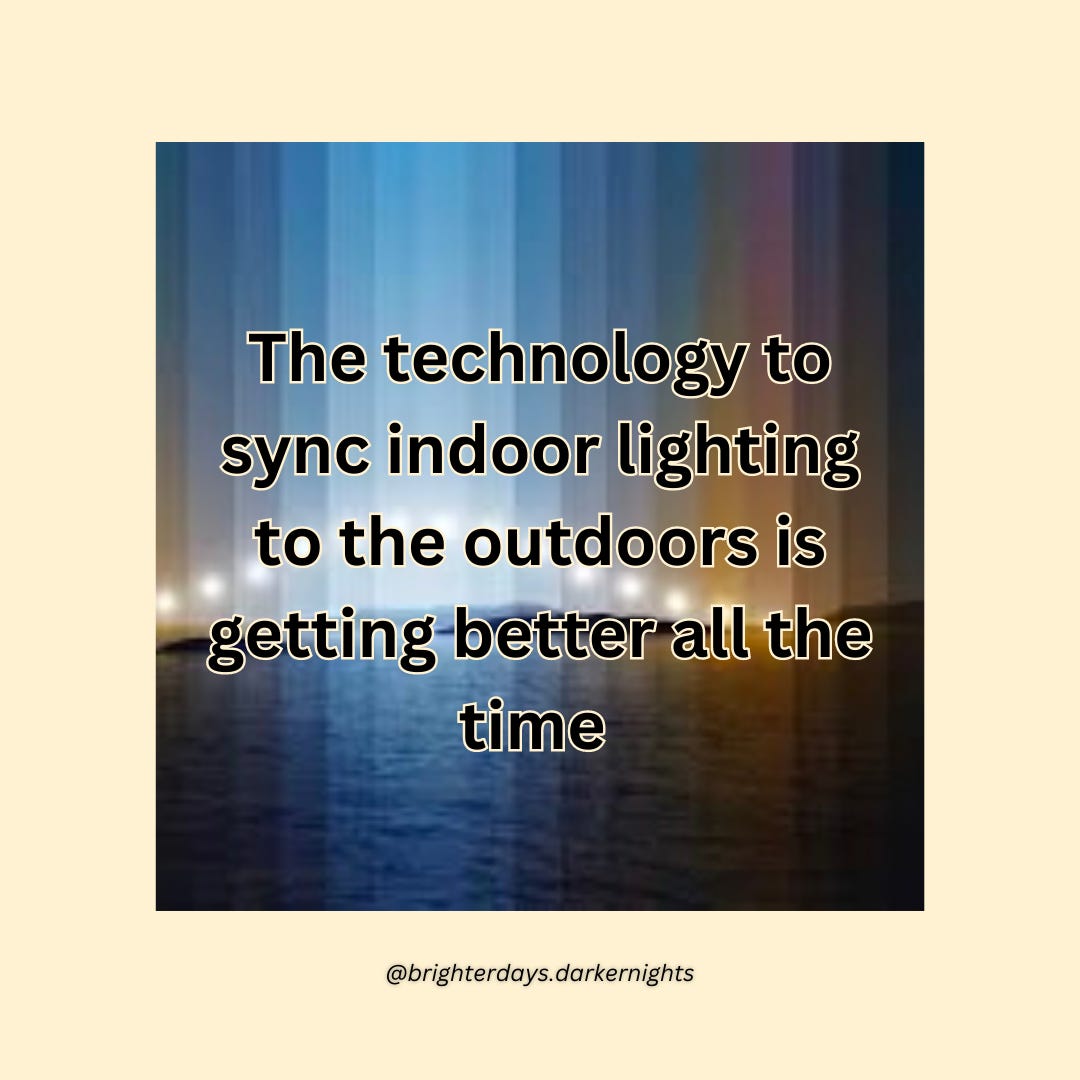How far would you go to cure depression?
Circadian health in urban environments
If you knew your environment was contributing to your depression (or depression in a loved one who lives at home with you)… would you move?
While not everyone is equally sensitive, some people are extremely sensitive to the negative effects of artificial light.
In fact, there can be up to 50-fold variation in individual sensitivity to artificial light as measured by melatonin suppression.
So if you or one of your family members falls on the more sensitive side, there’s a much higher likelihood of adverse outcomes relating to circadian disruption—most notably, depression.
Let’s look closer at how where we live plays into our circadian health:
The biological process of entrainment syncs the circadian rhythm with the local environment.
This happens primarily via light through our eyes, but also from the timing of:
Temperature
Food
Social contacts
and Physical activity
And the circadian rhythm in turn synchronizes all the systems in your body so they work together as they are meant to.
The urban environment changes this process.
On average, people in urban locations tend to have a later chronotype than those in rural locations.
And a later chronotype is associated with many chronic conditions, especially mental health and depression1.
The reason city people tend to have a later chronotype than country people could be due to:
Less solar exposure during the day
Greater artificial light pollution
Worse noise disturbances around the clock
More social opportunities (including work) late at night
While moving is certainly a hassle, I have known people (and am one of them myself) who made the decision to choose a location that allows for better sleep and thereby, circadian health and vitality.
Qualities of good locations for circadian health:
Wherever you spend your time, your body is picking up cues to signal the circadian synchronization of all your body systems.
This is why the location of your home, workplace (or school setting) are vital for your circadian health.
Here are the ideals for choosing places to spend time for better circadian health:
Prefer rural locations
Prefer a location with non-obstructed views
Choose settings with brighter exterior elements
Choose settings that make you want to go outside (the sun is the main source of entrainment)
While some choose to move South to get more sunlight, it’s possible to have good circadian health in the North, too.
The challenges with living in the North mainly stem from excessive artificial light and excessive imported foods.
Better circadian home design:
The choice of location matters, as well as the design of buildings themselves.
Here are features to look for in places you frequent:
Single-story buildings
Shallow floor plans
High windows to catch summer light
Low windows to catch winter light
Eastern windows to receive lighting in the morning
Southern windows to receive lighting in the afternoon
Whenever possible, favor daylight over electrical light
Courtyard homes naturally tend to have these qualities.
Here is what we know about interior design:
And finally, the things we can do to remodel for better circadian entrainment indoors wherever we are:
Remove exterior elements that block sunlight from entering through the windows
Move furniture and workstations closer to windows
Face work stations so eyes point towards (or perpendicular to) windows
Use blinds instead of window glazes to reduce glare
Cover walls with neutral tones and reflective paint to increase indirect light
Use blackout curtains to block outdoor artificial light from coming in at night if necessary—just make sure you are opening them on time in the morning
And you can also:
Improve overhead lights (choose bright ones, like the sun! Here are some full spectrum options)
Improve eye-level lights (choose amber ones, like the golden light of early morning and late afternoon—here are some amber options)
Install floor-level lights (choose red ones, like a banked bed of coals from a fire—here are some red options)
Read the research yourself
Here’s one of the most thorough articles about designing our spaces for better circadian health I’ve ever read: Role of Architectural Design in Creating Circadian-Effective Interior Settings (2021).
Go further on the topic of chronotype in the archive
How much time outside does it take to make you a morning-type?
Good curtains and nightlights for sleep in urban environments
And if moving out of the city isn’t an option for you, just being nearer to a neighborhood park or natural body of may help you and your family2.
Merikanto, I., Partonen, T., Berg, N., & Kiviruusu, O. (2024). Stability of morningness/eveningness and changes in sleep and mental health during mid-adulthood. Health psychology : Official Journal of the Division of Health Psychology, American Psychological Association, 43(7), 515–527. https://doi.org/10.1037/hea0001365
Torres Toda, M., Avraam, D., James Cadman, T., et al. (2022). Exposure to natural environments during pregnancy and birth outcomes in 11 European birth cohorts. Environment International, 170, 107648. https://doi.org/10.1016/j.envint.2022.107648






Well written. Interesting facts. Well done. Thank you